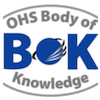Chapter 29: Mobile Plant
Abstract
Mobile plant is used in many Australian workplaces. The use of mobile plant has inherently high risk and every year is associated with a significant number of workplace fatalities and injuries. This chapter describes types of mobile plant commonly used in workplaces, the advantages and disadvantages of its use and the associated risk factors. An overview of the current legislative approach to regulating mobile plant is provided together with a review of the strategies for controlling hazards associated with mobile plant. A case study demonstrates the role of the generalist Occupational Health and Safety (OHS) professional in managing mobile-plant-related safety.
Keywords: mobile plant, hazard, risk, injury, legislation, control
First year of publication: 2012
Current Version Pending Review: 2012
Chapter 29: Mobile Plant
Table of contents
| 1 | Introduction |
| 2 | Historical context |
| 3 | Extent of the problem |
| 4 | Understanding mobile plant |
| 4.1 | Types of mobile plant |
| 4.2 | Advantages and disadvantages of using mobile plant |
| 4.3 | Risk factors and injuries associated with use of mobile plant |
| 4.4 | Risk assessment |
| 5 | Legislation and standards |
| 6 | Control of hazards associated with use of mobile plant |
| 6.1 | Elimination |
| 6.2 | Substitution |
| 6.3 | Engineering controls |
| 6.4 | Administrative controls |
| 6.5 | Personal protective equipment |
| 7 | Implications for OHS practice |
| 8 | Summary |
| Key authors and thinkers | |
| References | |
| Appendix 1: Australian Standards applicable to mobile plant |
Gloria Kyriacou Morosinotto BASc(OHS), GCTTL, CertIVWAT, FSIA
Director, Contract Safety Solutions
Gloria has eleven years experience as an OHS professional in the construction, manufacturing, transport and hire industries. For the past nine years, she has managed her own OHS consultancy and lectured in OHS at RMIT University. Gloria is the Champion of the Safety Institute of Australia (SIA) Building and Construction Special Interest Group, and Chief Organiser of the SIA OHS Construction Forum.
Peer reviewer
Dr Tim Horberry PhD, MSc, MErgSc, BA(Hons), MIRHF
Principal Research Fellow (Human Factors), Minerals Industry Safety and Health Centre, University of Queensland
Learning Outcomes: Physical Hazards: Mobile Plant
The OHS Body of Knowledge takes a conceptual approach which enables it to be applied in different contexts and frameworks.
To optimise its value for education and professional development learning outcomes have been developed for each technical chapter in the Body of Knowledge.
The learning outcomes as described give an indication of what should be the capabilities of an OHS professional; it is up to those developing OHS education programs, OHS professionals planning their CPD or recruiters or employers selecting or developing people for the OHS function to consider the required breadth vs. depth .
Please read the section on using the learning outcomes before delving into the leaning outcomes of the individual chapters.
The numbers against each learning outcome refer to the chapter number of the BOK download page. No learning outcomes have been developed for the chapters considered introductory or underpinning knowledge (that is chapters 1, 2, 3, 4, 5, 6, 7, 1, .13, 14, 15.)

